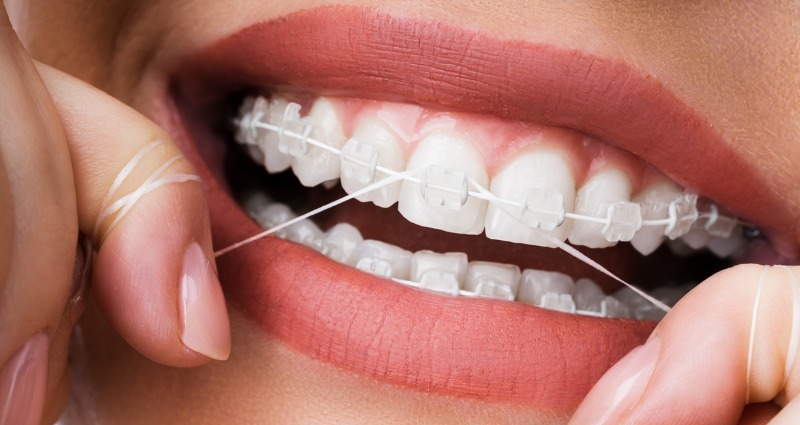Maintaining good oral hygiene is crucial, especially when you have braces. While braces help straighten your teeth, they can create additional challenges when it comes to oral care. Flossing is an essential part of your dental routine, and with a few adjustments, you can effectively keep your teeth and gums healthy throughout your orthodontic journey.
In case you’re looking for the best san mateo orthodontics for your dental issues, choose dr alborzi.
Step-by-Step Guide to Flossing with Braces:
- Gather the necessary tools:
- Dental floss: Opt for waxed floss or floss threaders specifically designed for braces.
- Interdental brushes: These can be useful for cleaning hard-to-reach areas.
- Orthodontic flossers: These pre-threaded flossers simplify the flossing process.
- Fluoride mouthwash: Rinse your mouth before and after flossing to remove debris.
- Choose the right flossing technique:
Threader technique: If using traditional floss, you’ll need to thread it under the wire of your braces. Take about 18 inches of floss and carefully guide it between two teeth, sliding it under the wire using a gentle back-and-forth motion. Then, move the floss up and down the sides of each tooth.
Orthodontic flossers or interdental brushes: These tools have built-in features that simplify flossing with braces. Follow the manufacturer’s instructions to effectively clean between teeth and around brackets.
- Be gentle yet thorough:
- Apply light pressure: When flossing, be gentle to avoid damaging your braces or gums. Apply enough pressure to remove plaque and debris but avoid excessive force that may cause discomfort.
- Focus on each tooth: Move the floss up and down along the sides of each tooth, ensuring you reach both the gumline and the area between the braces and teeth. Take your time and pay attention to every tooth in your mouth.
- Utilize interdental brushes: These small brushes can be inserted between teeth, around brackets, and under wires to dislodge any trapped food particles. Gently wiggle the brush back and forth to clean thoroughly.
- Establish a flossing routine:
Frequency: Aim to floss at least once a day, ideally before bed, to remove any accumulated debris and plaque.
Consistency is key: Make flossing a habit by incorporating it into your daily oral hygiene routine. Set reminders if needed until it becomes second nature.
Additional Tips for Effective Flossing:
- Seek professional guidance: Consult your orthodontist or dental hygienist for personalized advice on flossing techniques and tools best suited to your specific braces.
- Use fluoride mouthwash: Rinse with fluoride mouthwash before and after flossing to help prevent tooth decay and keep your mouth feeling fresh.
- Be patient: Flossing with braces may initially take longer than your usual routine. However, with practice, you’ll become more efficient and effective.
- Stay persistent: Don’t let challenges discourage you from maintaining good oral hygiene. Regular flossing and brushing will protect your teeth and gums throughout your orthodontic treatment.
Conclusion
Proper oral care is essential when you have braces, and flossing plays a vital role in maintaining healthy teeth and gums. By following the step-by-step guide provided above, you can navigate the challenges of flossing with braces and ensure a radiant smile. Remember to be gentle, patient, and consistent, and don’t hesitate to consult your orthodontist or dental professional for any specific concerns or questions you may have.
Taking care of your oral hygiene while wearing braces requires a little extra effort, but the results are well worth it. Regular flossing helps prevent tooth decay, gum disease, and other oral health issues that can arise during orthodontic treatment. By incorporating these flossing techniques into your daily routine, you can maintain a clean and healthy mouth.
